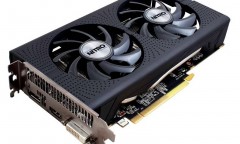By Lynn Palec, | December 15, 2016

Microsoft believes that the future of computing will rely heavily on virtual reality. (TechStage/CC BY-ND 2.0)
Most virtual reality headsets that are currently available on the market require a high-end computer to properly run and render a fully immersive VR experience. It appears that Microsoft is giving users a more flexible way of enjoying virtual reality with the latest set of hardware spec required to run VR headsets on Windows 10.
Like Us on Facebook
Microsoft believes that the future of computing will rely heavily on virtual reality, which is why the company is planning to bring VR experience to as many computers as possible.
Microsoft said that new hardware requirement for Windows 10 PCs would support tethered VR headsets and not fully integrated headset computers like the HoloLens. Tech companies like Acer, Asus, Dell, HP, and Lenovo have all confirmed that they are working on virtual reality headsets for PC, and this is the market Microsoft wants to capitalize on.
Unlike high-end virtual reality headsets like the HTC Vive and Oculus Rift, which require high-end graphics cards and processors, Microsoft said that its minimum hardware requirement would support low-end VR headset and allow it to run casual gaming, movies, and basic VR applications.
According to Computer World, Microsoft said that for a computer to run a virtual reality headset, it must have at least an Intel Core i5 7200U Kaby Lake processor, Intel HD 620 integrated graphics card, and 8GB of memory in dual-channel configuration. Microsoft added that the minimum requirement would be updated once the company rolls out the Windows 10 Creators Update next year.
The Creators Update is built around 4K movies, virtual reality, and 3D gaming. This new update will not need too much processor power but will require at least a discrete or powerful integrated graphics card.
According to iTechPost, Microsoft pointed out that for a Windows 10 PC to run virtual reality, it must have an HDMI 1.4 for 60GHz VR headsets or HDMI 2.0 or DisplayPort for 90GHz VR headsets. Other specs requirement are Bluetooth 4.0 support, SSD storage option, and DDR4 memory modules.
-
Use of Coronavirus Pandemic Drones Raises Privacy Concerns: Drones Spread Fear, Local Officials Say

-
Coronavirus Hampers The Delivery Of Lockheed Martin F-35 Stealth Fighters For 2020

-
Instagram Speeds Up Plans to Add Account Memorialization Feature Due to COVID-19 Deaths

-
NASA: Perseverance Plans to Bring 'Mars Rock' to Earth in 2031

-
600 Dead And 3,000 In The Hospital as Iranians Believed Drinking High-Concentrations of Alcohol Can Cure The Coronavirus

-
600 Dead And 3,000 In The Hospital as Iranians Believed Drinking High-Concentrations of Alcohol Can Cure The Coronavirus

-
COVID-19: Doctors, Nurses Use Virtual Reality to Learn New Skills in Treating Coronavirus Patients











